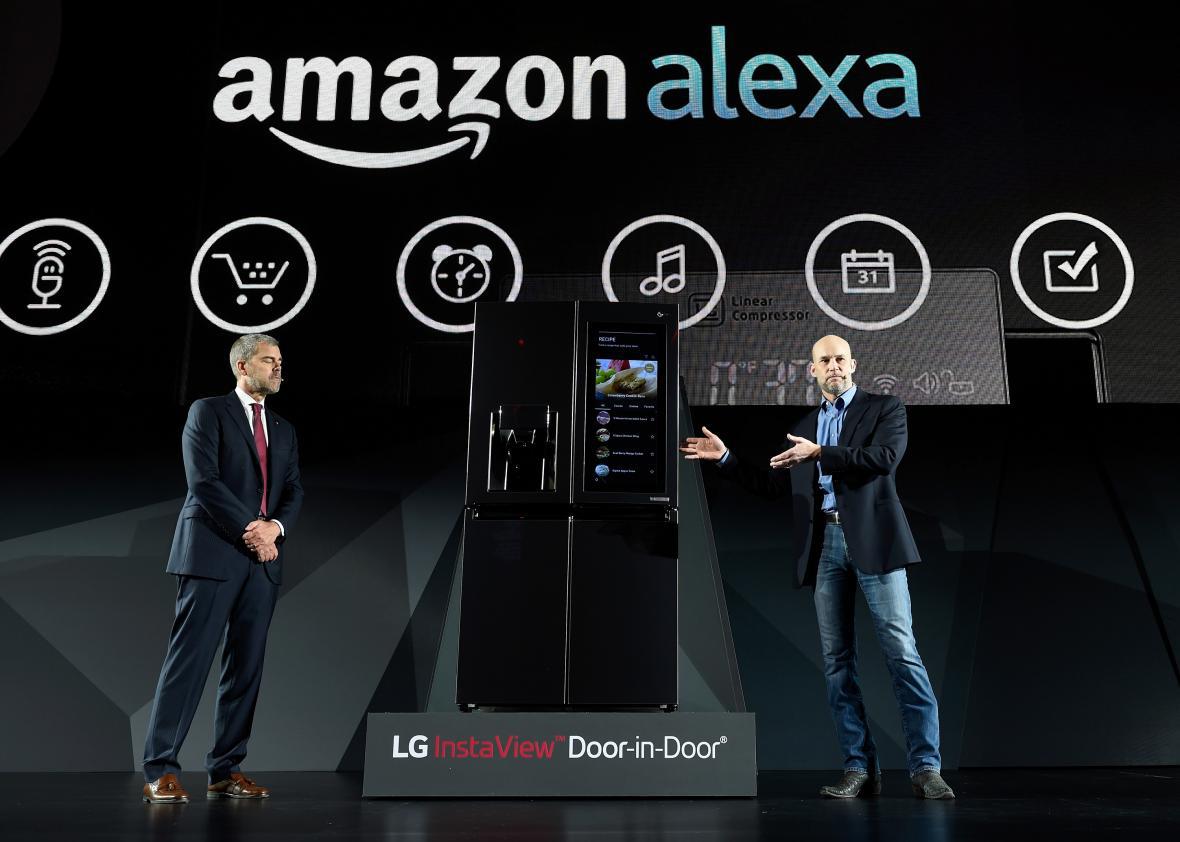Amazon is moving Alexa beyond the home. With a new developer kit announced Friday, hardware companies will more easily be able to integrate the voice-based virtual assistant into their wearable products—and consumers will be able to take Alexa with them wherever they go.
Amazon describes its Alexa Mobile Accessory Kit as “a new way to bring Alexa to portable, on-the-go devices such as hearables, headphones, smart watches, fitness devices, and more.” Instead of developers having to perform most of the coding to include Alexa in their products, they’ll be able to more simply connect to Alexa Voice Services with this kit through the Alexa app on a customer’s smartphone.
Earphones and wearables are a natural fit for Alexa’s next move. Google and Apple, Amazon’s main hardware competitors in the voice assistant space, already have wireless earbuds, the Pixelbuds and AirPods, imbued with their own respective digital assistants. For now, however, Amazon isn’t making audio hardware itself—it’s letting third-party brands and manufacturers take charge of that task. Amazon has been testing and refining the kit with Bose, and the kit itself will be available more broadly later this year. Several other audio and mobile accessory makers have also begun integrating Alexa into their products, including Beyerdynamic, Bowers and Wilkins, Jabra, and iHome. Late last year, Amazon debuted some similar development kits for smart home products, the Intel Voice Enablement Development Kit and AVS Device SDK. A second kit announced today, the Alexa Premium Voice Development Kit, expands this arena further as well by giving product makers access to the same far-field microphone array combination that’s used in the Echo and Echo Show.
Amazon is clearly focused on market penetration: It wants Alexa to be the voice assistant you turn to, whether you’re at home or on the road. While you can use Alexa on a smartphone through the Amazon or Alexa apps, it would seem—based on this push—that phone-based Alexa use isn’t very popular. At the least, it isn’t an area the company wants to dedicate time and resources. Which makes sense: Amazon doesn’t have a phone that Alexa seamlessly integrates into. If you’re on an iPhone, summoning Siri is more convenient than opening up the Amazon app; ditto with Google Assistant on Android handsets. Amazon tried the phone thing itself back in 2014, but its handset, the Fire Phone, never caught on with consumers.
Instead, with third-party wearable and audio accessory makers, Amazon can offer an attractive prospect beyond the phone. Apple’s not going to partner with a third-party manufacturer so it can put Siri in its product—Apple wants to control that experience from start to finish. Hardware makers aren’t going to attempt to develop their own assistant, a feat that would not only be costly but likely wouldn’t yield as good of an experience as software-focused giants like Apple and Google. But they know that virtual assistants are becoming an increasingly important feature in the mobile landscape. Now they can partner with Amazon, which can handle Alexa development while they add some code to integrate with the Amazon app. Suddenly their connected product is a more attractive buy to consumers (and can likely command a higher price point, too).
While the Amazon Echo and the smart speaker space are clearly very popular right now, it’s not so clear how big demand is for connected, virtual assistant-imbued earbuds (and other wearables). However, by making its brand of assistant widely available to a broad number of companies, Amazon is ensuring that when it comes to choosing a connected wearable, you’re presented with a variety of Alexa-touting options. This could definitely help Amazon further drive Alexa market penetration, and Alexa dependence, among consumers if this space eventually blows up like the smart speaker space has—or if non-Alexa users begin using the assistant through a third-party device and then decide to purchase an Echo.
It also doesn’t hurt that, compared to its competitors, Amazon is adding new Alexa abilities left and right—like the ability to work with microwaves so you can use your voice to defrost a pound of turkey rather than having to press a couple of buttons. While you may never operate the microwave remotely from your Alexa-enabled wearable, it’s kind of cool that you could if you wanted to. We’ll probably just stick to things like music streaming and Uber ordering, though.
